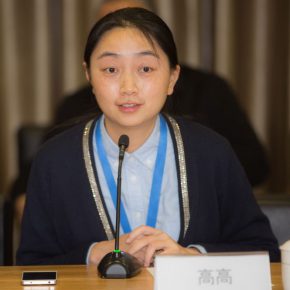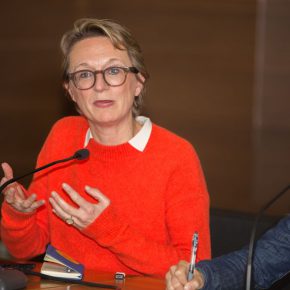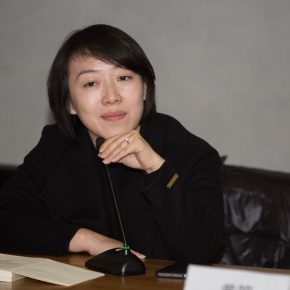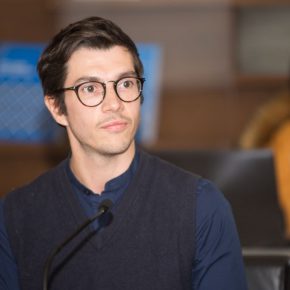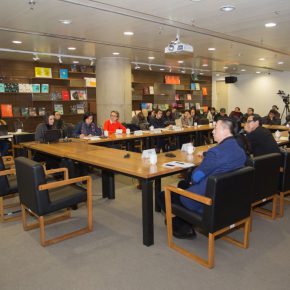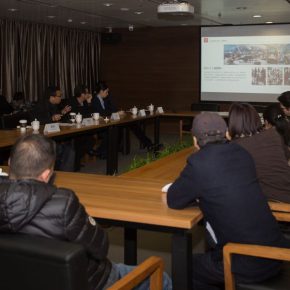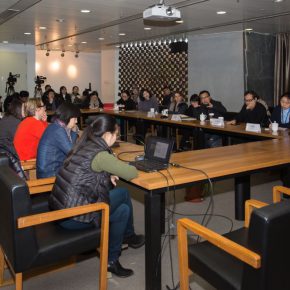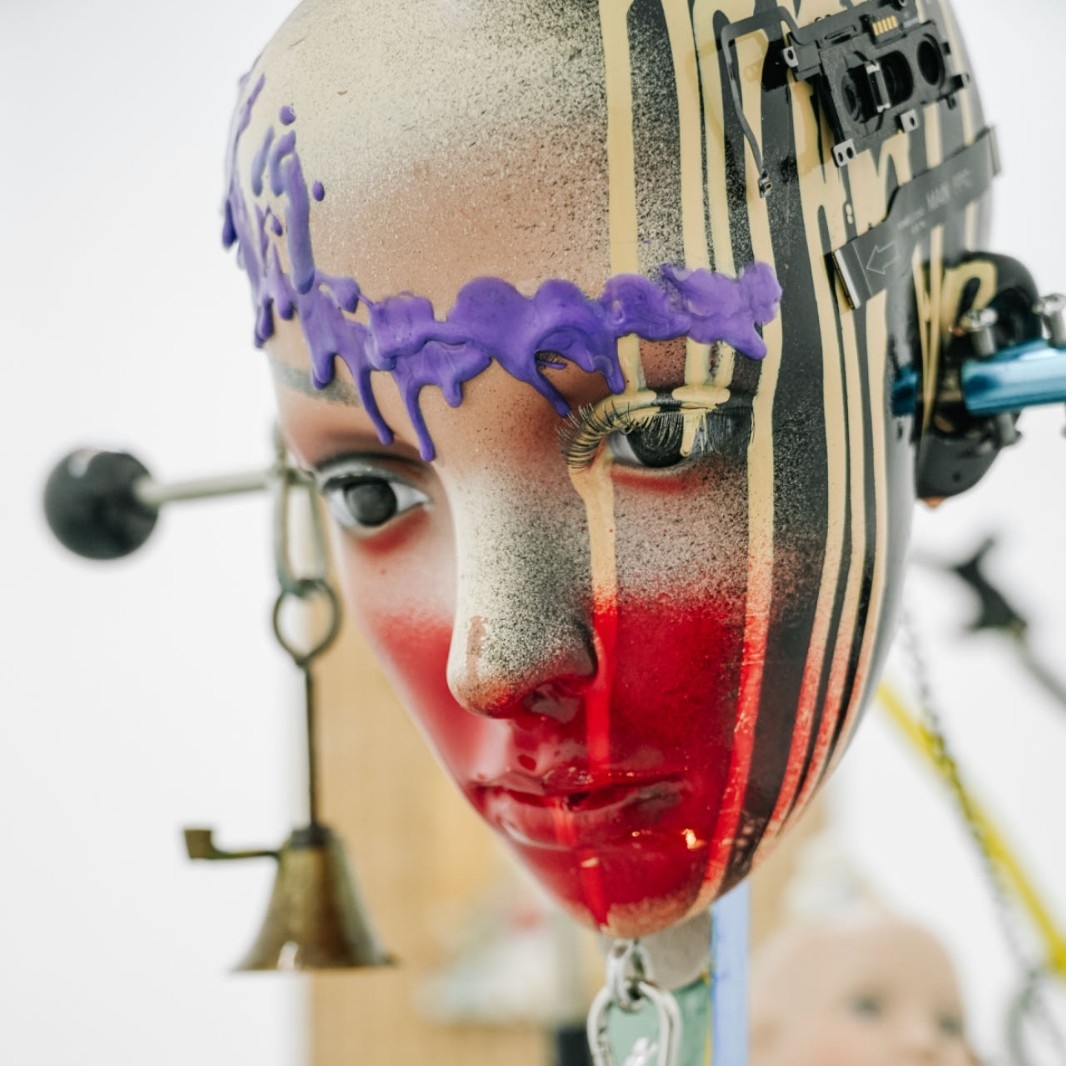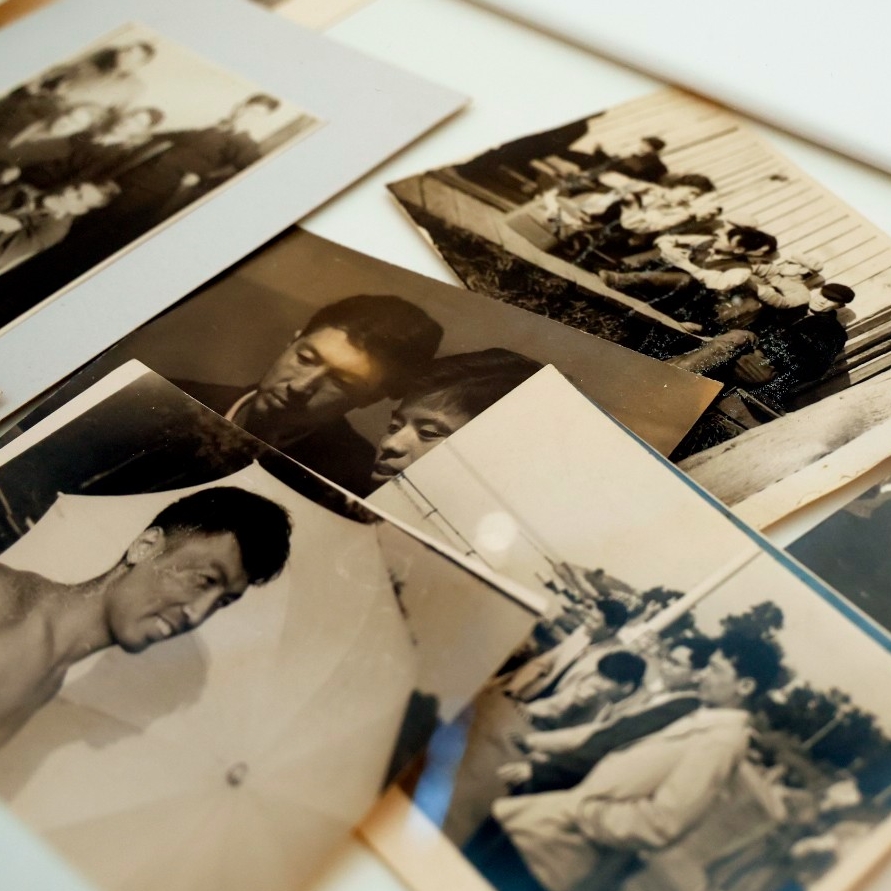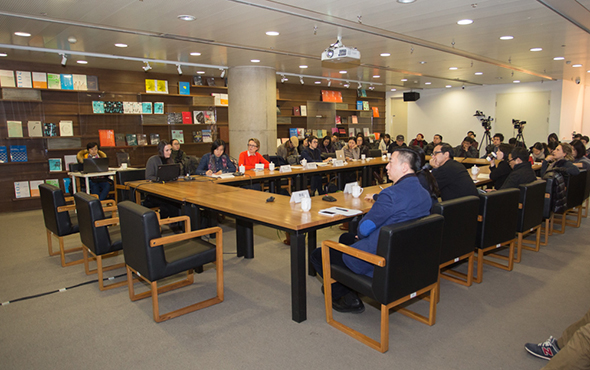
At 18:00 on Tuesday, November 22, 2016, “Thinking Space” Pioneer Dialogue Session III themed “the Chinese and French Curatorial Practice under the Contemporary Ideological Trend” was held in the multi-functional conference room at CAFA. The honored guests who participated in the dialogue included Chinese curators and scholars such as the independent curator Huang Du, Wang Chunchen, Head of the Department of Curatorial Research of CAFA Art Museum and Yan Yan, Deputy Director of Today Art Museum, in addition to Marie Cozette, Director of Centre d'art contemporain la Synagogue de Delme, France, Paula Aisemberg, a curator of the Foundation Antoine de Galber, France, and Mehdi Brit, a historian and a scholar of performance art.
In this dialogue, curators from the two countries based on the current contemporary cultural trends and vanguard ideas affecting exhibition planning, out of the concern for the topics of the times, the thinking of the ideology and ideas, to have a deep excavation and analysis of the profound meaning of the art works, starting from their own exhibition cases in order to respond to the theme of “Chinese and French Curatorial Practice under the Contemporary Ideological Trend”. The moderator of the dialogue was Tang Bin, Deputy Director of CAFA Art Museum, and a coordinator of the third CAFAM Biennial Gao Gao.
The dialogue was divided into two parts: in the first part, the curator respectively introduced cases, and the second part was a discussion. In the first part, the curators from France and China alternately gave an introduction. Director Marie Cozette said that, the task of the Centre d'art contemporain la Synagogue de Delme in France was approaching the pioneers of contemporary art, expressing their views on the contemporary, experimenting with the future prospect of art, and she believed that contemporary art should go beyond art itself, and the art museum should help them to complete the cooperation with the art forms in other fields.
Then, the independent curator Huang Du delivered a speech and gave the upcoming exhibition “BRIC-á-brac: The Jumble of Growth”, which was recently completed in cooperation with a Cuban curator at the Today Art Museum as an example. This exhibition focuses on the rise of the regions led by the BRICs under the trend of globalization and localization, exploring the origin of the vitality and dynamics of these regions, and attempting to excavate the potential state of art in these areas.
Curator Paula Aisemberg shared her curatorial experiences and used the foundation’s website to introduce the exhibitions planned by the foundation. She introduced the “Wall” of the 10th Anniversary of the Foundation Antoine de Galber in France, and the exhibited works were private collections of the founder Antoine de Galber. Instead of a curator, a piece of software replaced all the works as closely as possible so that the exhibition presented a nineteenth-century art salon without a title beside the work, and the public could learn all the information about the work through a computer in the exhibition. Paula said that, the exhibition offers the viewers the impression of a collector, rather than the impression of an ordinary art museum. In addition, the Foundation will plan some exhibitions about the appearance of the emerging cities such as Johannesburg in South Africa, and so on.
Yan Yan, Deputy Director of Today Art Museum introduced the two themed activities of “Finding Friends” and “Future of Today”, which have continued in recent years. “Finding Friends” began in 2013, at the beginning it only offered artists the opportunity to show work in two windows, and later it was developed to a form that artists continue to recommend to friends to display works in the windows on a relay basis and other spaces of Today Art Museum are also involved in the “Finding Friends” project of the year, and the other space is available by negotiation by artists and the art museum, so that the space outside the window also accommodates the “Finding Friends” project; at the same time, the form of works has become more diverse, and it gradually added forms of performance art such as dance, instead of the original installation and sculpture-based presentation and these changes reveal the art museum’s respect and encouragement for young artists. The “Future of Today” project has been implemented since 2015, and the highlight of the project is the use of multiple modes of display: the integration of cloud, offline, AR to display the works of art. These three methods respectively display the real, virtual and technological art museum. Today Art Museum plans to open the cloud art society accommodating 200 artists in 2017, to bring new ideas, new technology and new experience of art to the public domain.
The last speaker was Mehdi Brit, an historian and a scholar of performance art, who first described that the study of art history and the training as a comedian had played a significant role on his own creation and research, while the blending of the two creates the stage for performing art. His main study is the connection between man and space, which is reflected on the relationship between man and stage in the drama, and he hopes to achieve an art experiment through performance art. Brit wanted to explore the stage, theater, art form and the nature of performance art through performance art.
After the six curators illustrated their views, they had a fierce discussion on“Finding Friends” events at the Today Art Museum, the upcoming exhibition “BRIC-á-brac: The Jumble of Growth” planned by the curator Huang Du and the use of philosophical thought in French contemporary art, and finally they took a group photo after the dialogue, the “Thinking Space” Pioneer Dialogue Session III themed “the Chinese and French Curatorial Practice within the Contemporary Ideological Trend” created a perfect ending.
Text by Lai Yaqian, translated by Chen Peihua and edited by Sue/CAFA ART INFO
Photo by Hu Sichen/CAFA ART INFO



